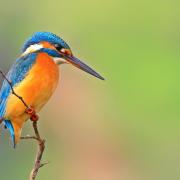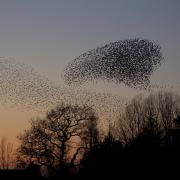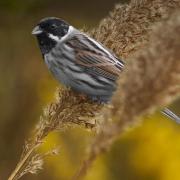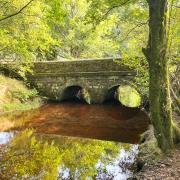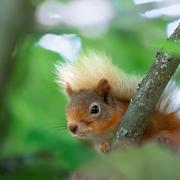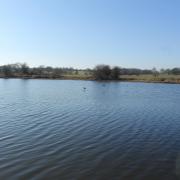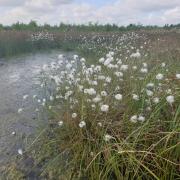Wagtails are one of our most colourful species of bird and are a common sight if you wander out into the countryside, but Lancashire Wildlife Trust’s Alan Wright finds them in unexpected places too

One of my favourite places in winter is outside Next at Robin Park in Wigan. Here, in a tree you will find up to 500 pied wagtails. Until I discovered this flock, warming itself on the neon lights of the clothing store, I had only seen pairs or single pied wagtails walking jauntily along the ground, tails wagging (as per their name) or flying in swoops, up and down through the air.
These gorgeous birds are a mixture of black and white. In summer, males have a white forehead, cheeks and belly with a black mantle, head, throat and breast and a grey back. But, now in the colder months, they get darker and their throat feathers turn white. Females tend to be darker in colour.
Pied wagtails eat insects, but will feed on seeds and scavenge through rubbish in winter. They flock together at warm roost sites like reedbeds and sewage works or trees and bushes in city and town centres, as at the shopping centre.
In summer, they defend breeding territories and will nest in ivy, under roofs, in walls, between stones… in many different places.

Pied wagtails tend to live for two years on average, but the maximum recorded age was 11 years and three months.
The last grey wagtail I saw was in a stream behind the lovely St Mary's Church, in Ellenbrook, Salford. It bobbed along the stream, stopping on a stone to wag its tail, before disappearing under a small bridge.
It was an unexpected sight as grey wagtails are more recognised as breeding birds of fast-flowing upland rivers. They do move downhill in winter and can be found in towns and cities.
The rocking, wagging of the tail is in unison with the babbling of the brooks, below their perch on rocks above the water.

Grey wagtails eat ants and midges they find beside rivers, and snails and tadpoles from shallow water. They nest near the water in hollows and crevices lined with moss and twigs.
The grey wagtail has a long, black-and-white tail, a yellow rump and a yellow belly. It is grey above with black wings. Males have a grey face with a black throat bib and a white moustache.
In recent years the grey wagtail is reported to have extended its territory as urban rivers have become less and less polluted.
Our other wagtail, the yellow wagtail isn't around at this time of year, spending winter in warmer places, like Africa. Yellow wagtails have a yellow face and underparts with olive wings, so they are not difficult to recognise if you see one.
I had an encounter with this bird on Little Woolden Moss, near Cadishead, on a bright sunny day.
Although, their tails are shorter than their two cousins, they are just as waggy. They inhabit damp marshes and meadows, and feed on insects disturbed by livestock. They nest in long grass, building a cup-shaped, fur-lined nest.
So, this winter keep an eye out for our two species of wagtails, and look forward to the yellow wagtail's return in spring.












